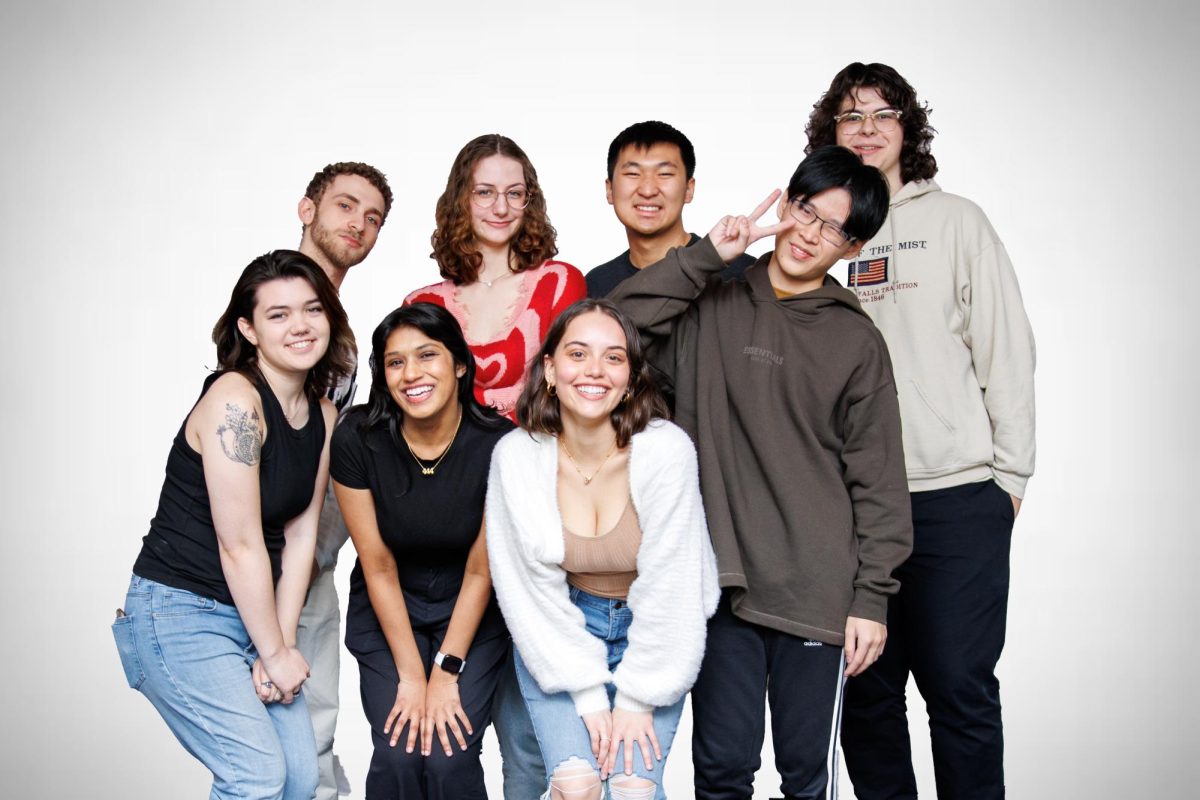
A dance team unable to perform at a competition. A singing group unable to sing for an audience. A soccer club unable to play a game.
Clubs and organizations thrive on interaction, community and events, all of which are a vital part of campus life. However, they are now forced to adapt to a remote experience and limited funds in the midst of the coronavirus pandemic.
Stony Brook University has had to adapt to health and safety policies from New York state, and Student Organization Health and Safety Guidelines have been put in place to ensure social distancing. Although in-person events and meetings can be submitted by request once per month, the Department of Student Engagement and Activities strongly encourages prioritizing virtual and remote options.
“The COVID-19 pandemic has and will continue to impact how Seawolves experience daily life,” the Office of Student Life and the Department of Student Engagement and Activities said in an email to clubs and organizations on Aug. 27. “We have a shared commitment to a community of care and ensuring we have a safe and vibrant student life this semester.”
According to Stony Brook University officials, they are putting together various virtual events to help create a campus community between both new and returning students. The university is setting out to make sure that campus life is not lost in the shuffle.
“We’re planning lots of large virtual and small in-person events to keep our campus community connected and engaged,” Rick Gatteau, vice president of student affairs said.
The New York State Guidelines for Sports and Recreation also classify competitive and group dance as higher-risk activities. According to Stony Brook University’s guidelines, higher risk activities that are allowed include both individual and small group rehearsals with no contact. Individual and small group performances are considered allowable lower and moderate risk activities. To ensure a safe student life, performance groups on campus have been met with many limits. Some groups have said that the new guidelines make it challenging for them to do what they do best — perform for people.
For instance, Deja Vu Dance Team relies on teamwork during dancing and performing for big audiences.
“I feel like the coronavirus is the complete antithesis of dance teams,” Merlissa Alexandre, a sophomore applied mathematics and economics major and treasurer of the Deja Vu Dance Team said. “We literally thrive off of tight group formations and having large audiences view our craft. Not to mention our practices will most definitely require some form of human contact.”
For the Stony Brook University Ballroom Dance Team, dancing lessons with partners are a vital part of their practices, but that no longer is an option.
“In ballroom, partner connection plays a big role and in quarantine a lot of that connection is lost,” Leela Sotsky, a sophomore chemical and molecular engineering major and treasurer of the Ballroom Dance Team, said. “Initially, losing the social aspect of our club made it very difficult to stay motivated and dance.”
A benefit of moving to remote practices was an increase in flexibility when scheduling lessons with their coach, as well as having the ability to hold more lessons virtually through Zoom.
The Stony Brook University Belly Dancing Team, has also found the switch to remote practices challenging.
“With the switch to online, we lost the ability to meet in person in a large practice space like the Recreation Center or the Staller Center, which affects our ability to practice and choreograph more complicated dances,” Brooke Osekoski, a sophomore marine vertebrate biology major and treasurer of the Belly Dance Team, said.
For the African Student Union, the remote experience changes the way they run, since their organization is about interaction, experience and sharing different cultures. In a normal semester, the club would host in-person cultural programs, collaborate with other cultural organizations and host large on-campus events.
“With everything going remote, people cannot build the same connections and relationships online because it promotes less focus and more distancing,” Abdoulaye Barry, a junior business management major and treasurer of the African Student Union, said.
In addition to the struggles of the remote experience, clubs and organizations are also facing financial restraints.
Even as COVID-19 has caused major budget issues for Stony Brook University, the Undergraduate Student Government (USG) decreased the student activity fee (SAF) from $99.50 to $40 for the Fall 2020 semester.
The SAF financially supports more than 120 clubs and organizations at Stony Brook University, and provides them grants for training and event planning services.
“Going into the Fall 2020 semester, we recognize that the presence of clubs and organizations, whether in person or virtually is vital to keeping the student experience as enjoyable and meaningful as possible,” Shaheer Khan, president of the USG and a senior political science major, said.
Khan said that the fee also gives USG the opportunity to employ more than 80 students and financially support the Academic Success & Tutoring Center, the Division of Student Affairs, the Stony Brook Volunteer Ambulance Corps, the Commuter Student Association and the Residential Hall Council Association, among other groups.
USG decided to lower the SAF in order to accommodate both student and organizational needs while reducing financial strains on the student body, Khan said.
For the Summer 2020 session, USG reduced the fee by 40%. The price went from $16 per summer session to $10.
According to the State University of New York’s Student Activity Fee policy, the SAF goes through a mandatory referendum vote every two years. This September, students will have the opportunity to vote between making the fee mandatory or voluntary.
The student activity fee is the only fee that gives students the option to vote on payment, unlike transportation or athletic fees.
“If the Student Activities Fee Referendum fails and becomes voluntary, all the services [that the fee funds] will cease to exist, or be extremely limited in what they will actually be able to provide for the students,” Khan said.
The 2020-2021 USG academic year budget projected what their revenue should be based on the decreased SAF.
Deja Vu Dance Team saw a reduction in their 2020-2021 budget, which did not come as a surprise to them, Alexandre said. Their budget went from $5,850 in 2019-2020 to a current budget of $5,050 without fall revisions, which will most likely bring it down once again if enrollment has also decreased.
“I’m just glad they didn’t cut the whole foot, maybe just a toe,” Alexandre said. She believes that the new budget did not hurt the team, as the loss is the same amount of money that would have been used to travel to competitions.
After months of planning, the African Student Union canceled its annual fashion show last spring semester in the wake of COVID-19. ASU had an annual budget of $28,700, and had planned to spend more than $24,000 in projected expenses solely on the fashion show.
“Due to the budget cuts SBU has faced and the Student Activity Fee being decreased, the money that our organization usually receives has decreased,” Barry said.
ASU’s budget for the current academic year is $26,600, without the anticipated fall revisions.
Revisions to the 2020-2021 budget will be made after the Fall 2020 USG elections are held, according to Khan.






















James Bowen • Sep 2, 2020 at 3:16 pm
A lot of research went into this! Well done!